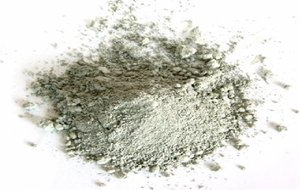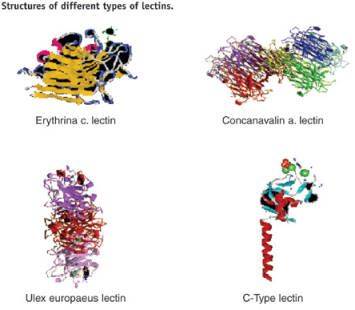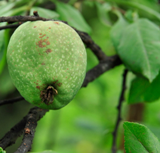GlugerZym contains an “adaptogenic” mixture of fermented herbal compounds including organic germanium, lectins and phenolics extracted from herbs in a synergistic proprietary formula designed to promote anti-cancer effects.
 Germanium is a metalloid (elements with a mixture of metallic and non-metallic properties), that has strong natural semiconductor properties and is closely linked to carbon and silicon. In its inorganic form, the trace mineral germanium is used in the electronics industry as a semiconductor, and has no nutritional or therapeutic benefits. However, in its organic form, germanium is being hailed as one of the greatest new developments in the nutritional treatment of cancer. Organic germanium is a biological-response modifier. Biological-response modifiers are substances that can enable the body to change its response to tumors, resulting in therapeutic benefits. Germanium does not directly attack cancer cells. Instead, it seems to modulate the body’s immune system, making it potentially effective in the treatment of cancer as well as other degenerative diseases. In human biology germanium is highly effective as an intracellular electrical impulse initiator. It is said to help correct imbalances in the electrical load in the human body and has a metallic cofactor of oxygen utilization.
Germanium is a metalloid (elements with a mixture of metallic and non-metallic properties), that has strong natural semiconductor properties and is closely linked to carbon and silicon. In its inorganic form, the trace mineral germanium is used in the electronics industry as a semiconductor, and has no nutritional or therapeutic benefits. However, in its organic form, germanium is being hailed as one of the greatest new developments in the nutritional treatment of cancer. Organic germanium is a biological-response modifier. Biological-response modifiers are substances that can enable the body to change its response to tumors, resulting in therapeutic benefits. Germanium does not directly attack cancer cells. Instead, it seems to modulate the body’s immune system, making it potentially effective in the treatment of cancer as well as other degenerative diseases. In human biology germanium is highly effective as an intracellular electrical impulse initiator. It is said to help correct imbalances in the electrical load in the human body and has a metallic cofactor of oxygen utilization.
Organic germanium can enhance the immune system, stimulate the production of interferon, and promote antitumor activity. Interferon’s most important function is to augment and stimulate the body’s production of natural killer (NK) cells, which directly combat cancer cells. One review of organic germanium’s anti-tumor mechanisms concluded that its most important and best described activity is its ability to cause tumor regression in a wide variety of experimental models. many of the important herbs and medicinal plants traditionally used in healing—such as ginseng, garlic, com-frey, and aloe—all contain substantial amounts of germanium. the amount of germanium in a plant varies according to the quality of the soil in which it grows and that adding germanium to the soil enhances plant growth. the therapeutic benefits of these herbs were in part due to the high amounts of germanium they contain.
In its organic form, each atom of germanium is bonded to three atoms of oxygen, making it an efficient carrier of oxygen. organic germanium seems to be able to partially substitute for or supplement oxygenation in living tissues. the effectiveness of organic germanium in combating a variety of diseases to its ability to oxygenate cells. Organic germanium restores the normal function of T-cells, B-lymphocytes, natural killer cell activity, and the numbers of antibody-forming cells…. Organic germanium has unique physiological activities without any significant side effects. The patients who received organic germanium in combination with other therapies showed a higher response rate and improved survival time, particularly for cases of small cell carcinoma. When organic germanium was used in combination with immuno-chemotherapy, the beneficial effects included an inhibition of tumor growth, a decrease in metastasis, and prolonged survival times. Organic germanium also resulted in the recovery of lost body weight caused by chemotherapy.
 Dietary lectins slow cancer progression. Lectins are carbohydrate-binding proteins that are found in most plants, particularly seeds and tubers such as cereal crops, potatoes, and beans (legumes). Lectins are proteins that do not break down easily, and they are resistant to both stomach acid and digestive enzymes. Lectins may bind to the wall of the gut and damage the gut lining. They can cause changes in the function of the gut which may be related to diseases such as colitis, Crohn’s disease, Coeliac-Sprue, and IBS. Because of the damage that lectins do to the gut, other proteins may be able to cross into the body undigested and cause allergic reactions within the body. As lectins can cross into the body through a damaged gut wall, they can bind to cell membranes in arteries and vessels, organs, and glands. This binding can create reactions which lead to auto-immune disorders or degenerative diseases. Different lectins are associated with different diseases. For example, dairy-based lectins are associated with juvenile onset type-1 diabetes.
Dietary lectins slow cancer progression. Lectins are carbohydrate-binding proteins that are found in most plants, particularly seeds and tubers such as cereal crops, potatoes, and beans (legumes). Lectins are proteins that do not break down easily, and they are resistant to both stomach acid and digestive enzymes. Lectins may bind to the wall of the gut and damage the gut lining. They can cause changes in the function of the gut which may be related to diseases such as colitis, Crohn’s disease, Coeliac-Sprue, and IBS. Because of the damage that lectins do to the gut, other proteins may be able to cross into the body undigested and cause allergic reactions within the body. As lectins can cross into the body through a damaged gut wall, they can bind to cell membranes in arteries and vessels, organs, and glands. This binding can create reactions which lead to auto-immune disorders or degenerative diseases. Different lectins are associated with different diseases. For example, dairy-based lectins are associated with juvenile onset type-1 diabetes.
Some other diseases that are thought to be associated with lectins include:
insulin dependent diabetes
rheumatoid arthritis
IgA nephropathy
peptic ulcers
The news is not all bad when it comes to lectins. It can be helpful to think of lectin as a type of protein that contains a key that fits a certain lock. The lock is a specific carbohydrate. If the lectin has the right key comes into contact with the right lock or carbohydrate, the lock is opened, damaging the cell membrane, and thus damaging the cell. The lectins, however, can be inactivated by specific carbohydrates known as mono and oligosaccharides, which bind the key and stop it from fitting the lock. It is best not to rely on these carbohydrates completely, though, as the safest path is to avoid all known toxic lectins.
There have been studies that show that lectins are able to make abnormal and malignant cells stick together, as well as stop them from functioning. This has important overtones when it comes to types of cancer. Soy protein in low concentration has this effect on cancer cells, while leaving normal cells alone in blood types A and AB. Peanut lectins are shown to fight breast cancer cells in blood types A and AB. Peanut lectins inhibit cancer cell growth and destroy cancer cells in blood types A and AB. Soy bean lectins makes cancer cells stick together and also destroys them in blood types A and AB. Fava bean lectins promote cell differentiation in all blood types. Amaranth lectins inhibit cancer growth in blood types A and AB. Domestic mushrooms promote cell differentiation in all blood types and jackfruit lectins stick together T antigens in all blood types.
Several lectins have been found to possess anticancer properties; they are used as therapeutic agents, preferentially binding to cancer cell membranes or their receptors, causing cytotoxicity, apoptosis, and inhibition of tumor growth. These compounds can become internalized into cells, causing cancer cell agglutination and/or aggregation. Ingestion of lectins also sequesters the available body pool of polyamines, thereby thwarting cancer cell growth. Lectins can also downregulate telomerase activity and inhibit angiogenesis.
 Chaenomeles lagenaria is a native plant with bright red-orange colored flowers. The plant is also cultivated in Japan, so it is known as Japanese Quince. Since Chaenomeles lagenaria is rich in organic acids that inhibit bacteria growth, it has been made into Chinese herbal medicine and used internally and topically to treat pain; especially arthralgia and spasms, but also for skin irritation and swellings. Other researches have found that triperpenoid compounds, such as ursolic acid (UA) and oleanolic acid (OA) isolated and identified in the fruit of Chaenomeles lagenaria have shown marked anti-tumor effects. However, the studies of Chaenomeles lagenaria carried out so far have not focused on extracting a lectin or similar substance from Chaenomeles lagenaria nor are there any substantial studies relating to therapeutic effects of lectin extracted from Chaenomeles lagenaria. In search of a substance that is both effective in inhibiting tumor growth and applicable to binding to a specific red cell surface receptor, the lectin is extracted from Chaenomeles lagenaria to develop a therapeutic agent that meets the above demands with minimum side effects. In addition, alralin, a novel lectin, from Aralia elata (Japanese angelica tree) selectively induces apoptosis in human virus-transformed and cancer cells.
Chaenomeles lagenaria is a native plant with bright red-orange colored flowers. The plant is also cultivated in Japan, so it is known as Japanese Quince. Since Chaenomeles lagenaria is rich in organic acids that inhibit bacteria growth, it has been made into Chinese herbal medicine and used internally and topically to treat pain; especially arthralgia and spasms, but also for skin irritation and swellings. Other researches have found that triperpenoid compounds, such as ursolic acid (UA) and oleanolic acid (OA) isolated and identified in the fruit of Chaenomeles lagenaria have shown marked anti-tumor effects. However, the studies of Chaenomeles lagenaria carried out so far have not focused on extracting a lectin or similar substance from Chaenomeles lagenaria nor are there any substantial studies relating to therapeutic effects of lectin extracted from Chaenomeles lagenaria. In search of a substance that is both effective in inhibiting tumor growth and applicable to binding to a specific red cell surface receptor, the lectin is extracted from Chaenomeles lagenaria to develop a therapeutic agent that meets the above demands with minimum side effects. In addition, alralin, a novel lectin, from Aralia elata (Japanese angelica tree) selectively induces apoptosis in human virus-transformed and cancer cells.
Unfortunately, dietary lectein didn’t help cancers due to extremely low solubility/bioavailability. There are several pharmacokinetic studies about lectin’s low solubility/bioavailability, which means that most of what we swallow goes directly into our gastrointestinal area and is expelled. In order to introduce pure lectin into the blood via absorption and maximize the activity of lectin in the body, you could use GlugerZym. GlugerZym is the only product in the world that has perfect solubility/bioavailability of lectin enough to induce apoptosis of the cancer cells. Otherwise, lectins wouldn’t have worked. GlugerZym is synergistic with BroccoZym, CurcuZym, GenisZym and ChemoZym against cancer and leukemia.